Neutral colors always look advantageous: they’re easy to pair with other shades, and they won’t become irritating over time. The Gray Bathroom is a calm yet noble option. This palette works equally well for classic or modern interiors. In this article, we’ll discuss what to consider when decorating a bathroom and which colors to match with a gray base.
Color Characteristics

Gray belongs to the achromatic spectrum along with white and black. Essentially, it’s something in between them, less contrasting and much more diverse in color, as gray has over a hundred shades! It’s this variety that makes it so versatile, as it can look delicate and rugged, cozy and striking, yet with a ‘coolness’. Some tones look better on a textured stone, while others on a smooth matte surface.
When planning the design of a gray bathroom, pay attention to the following shades:
- Warm tones with a yellow or beige undertone, such as greige, biscuit, and heliotrope.
- Slightly darker, closer to brown, like stone, pigeon, and aged wood.
- On the verge of green, such as verdigris, green tea, marsh, and grey-olive.
- Cool tones with a hint of blue, like maroon, steel, slate, waltz Gavot, and slate-gray.
- Neutral ones, like slate-gray, asphalt, wet stone, pigeon’s wing, silver, and monsoon.
- Very light shades approaching white, such as gainsboro, river pearl, and zircon.
It’s a true chameleon color. Depending on the undertone, achromatic color acquires different properties: in a light variant, it can expand space, like white, while in a dark one, on the contrary, it can deepen it. Similarly, a cold shade with a blue or green hue visually pushes the surface away, while warm colors are perceived as closer.
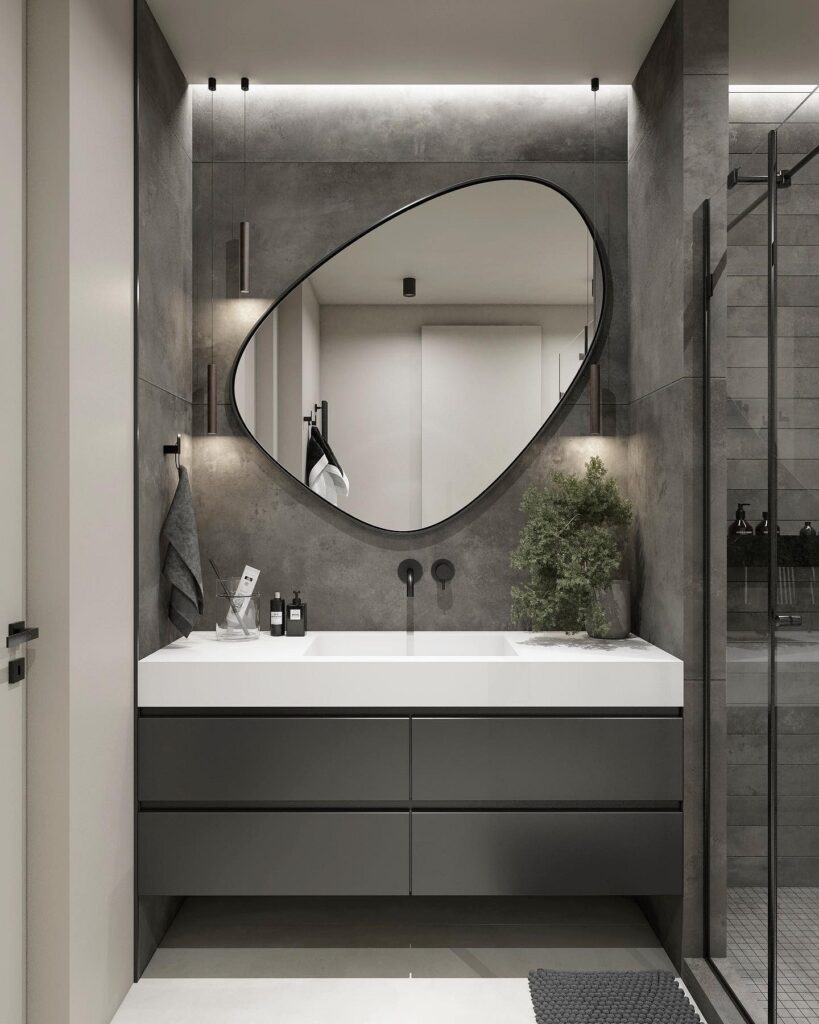





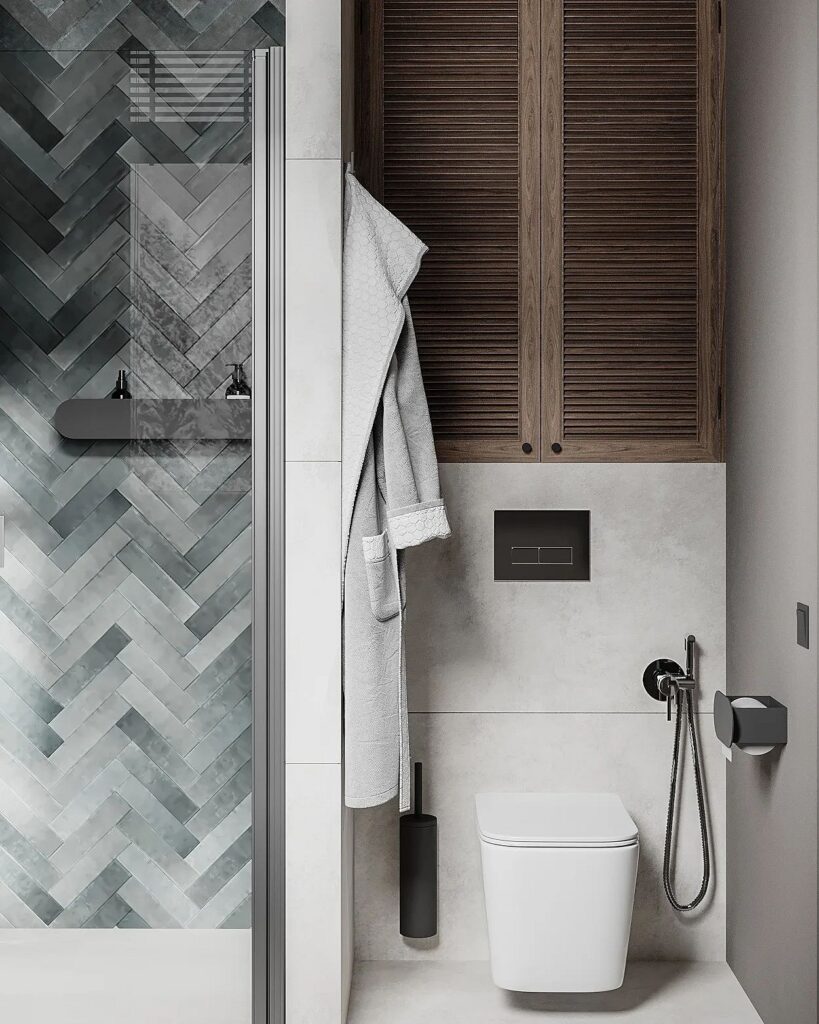

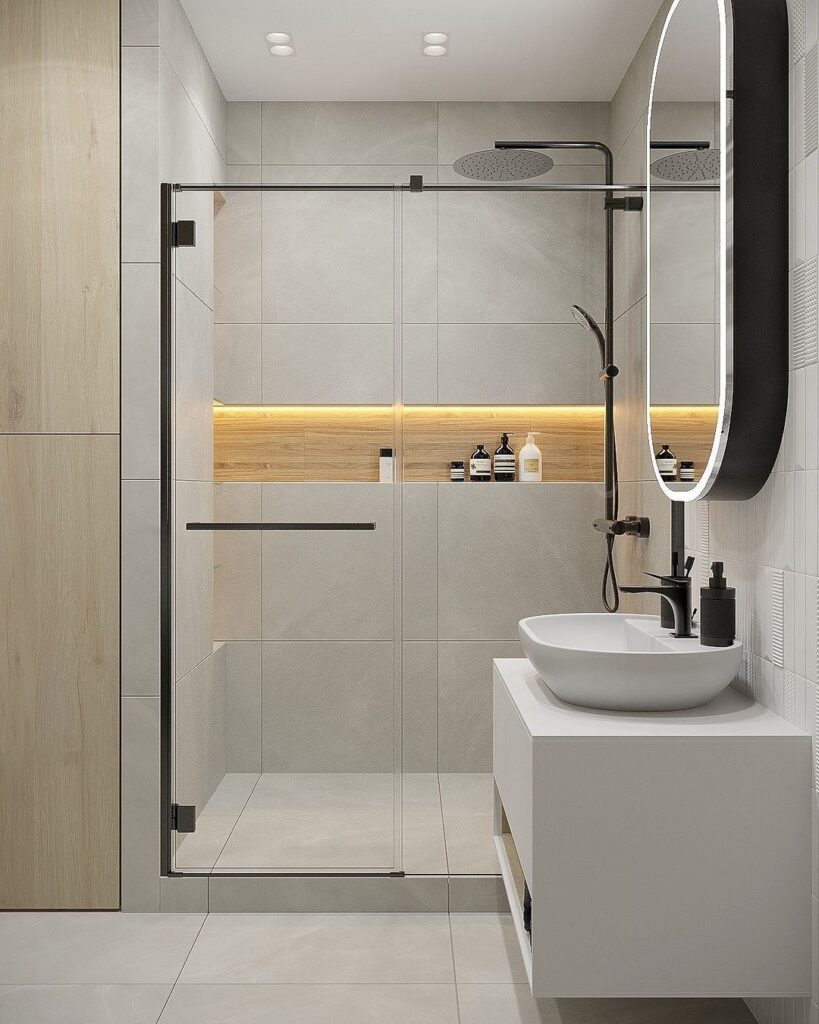

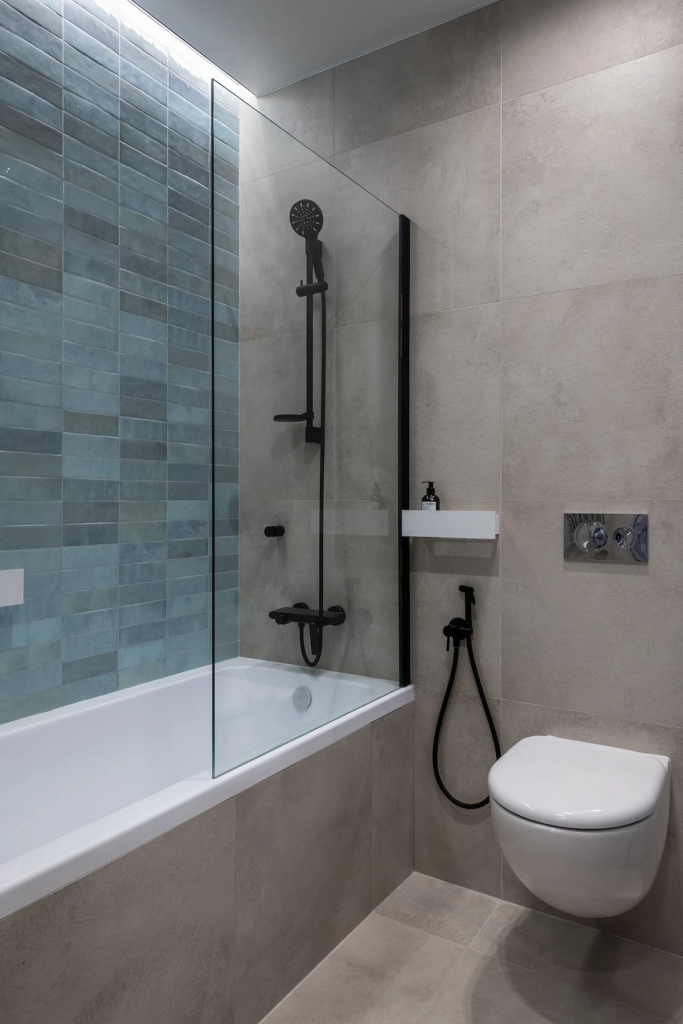

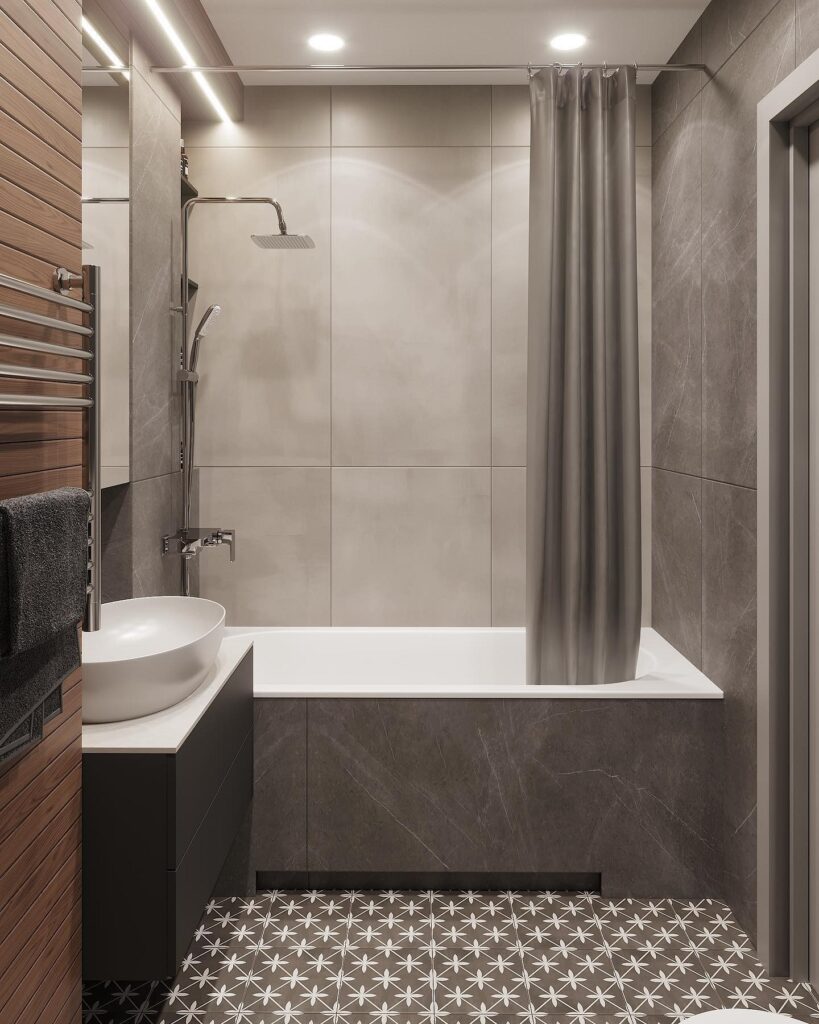

Ideas for Decorating a Bathroom in Gray Tones
Gray palette in the bathroom can be interpreted in various ways. The color is suitable both for the background and for small details.
Finishing

Due to its neutrality and compatibility with any other colors, achromatic color is the best candidate for the base role. The only problem is that it can look too simple and boring, but this is solved with the right surroundings and emphasis on textures.
Different interior styles require certain approaches:
- In a classic bathroom, walls painted in a beautiful noble shade (such as pearlescent, platinum, or greige) or light gray ceramic granite imitating marble will look good. If the finish mimics a particular material, the coating should be appropriate: for example, with a slight glossy sheen for marble.
- In styles like loft, minimalism, or contemporary, bathrooms are often decorated with large-format tiles. More often than not, they also have a concrete texture or the texture of natural material like granite.
- In eco, boho, and Scandinavian styles, light shades are typically used in bathroom decor. If white feels monotonous or you want to complement it with something, opt for tiles with a distinctive pattern or an interesting relief surface. A white-gray bathroom will look subtle and visually light.
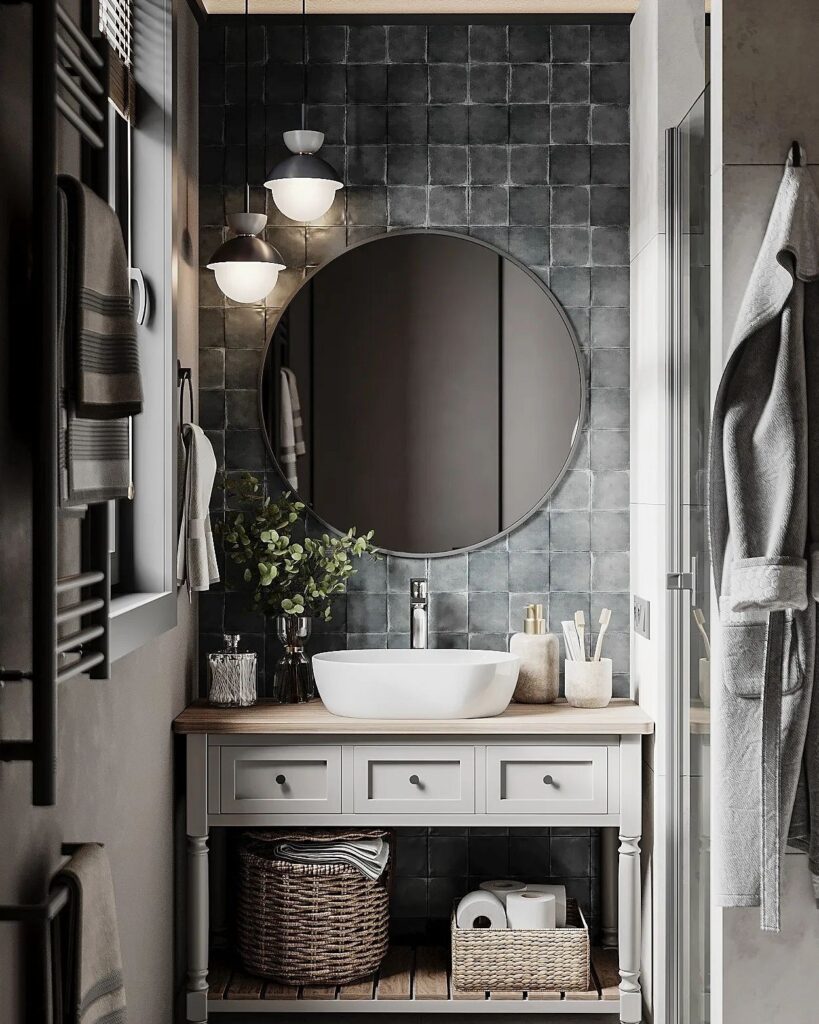









For the floor, a darker color is usually chosen than for the walls. Or, if you have a minimalist monochrome, in the same shade and even in the same material—such unified finishing looks particularly good in a small bathroom, where boundaries need to be blurred. But in this case, there shouldn’t be too much intricate relief: for example, it’s not worth covering all four walls and the floor with terrazzo tiles. But opting for a concrete-like covering is possible.

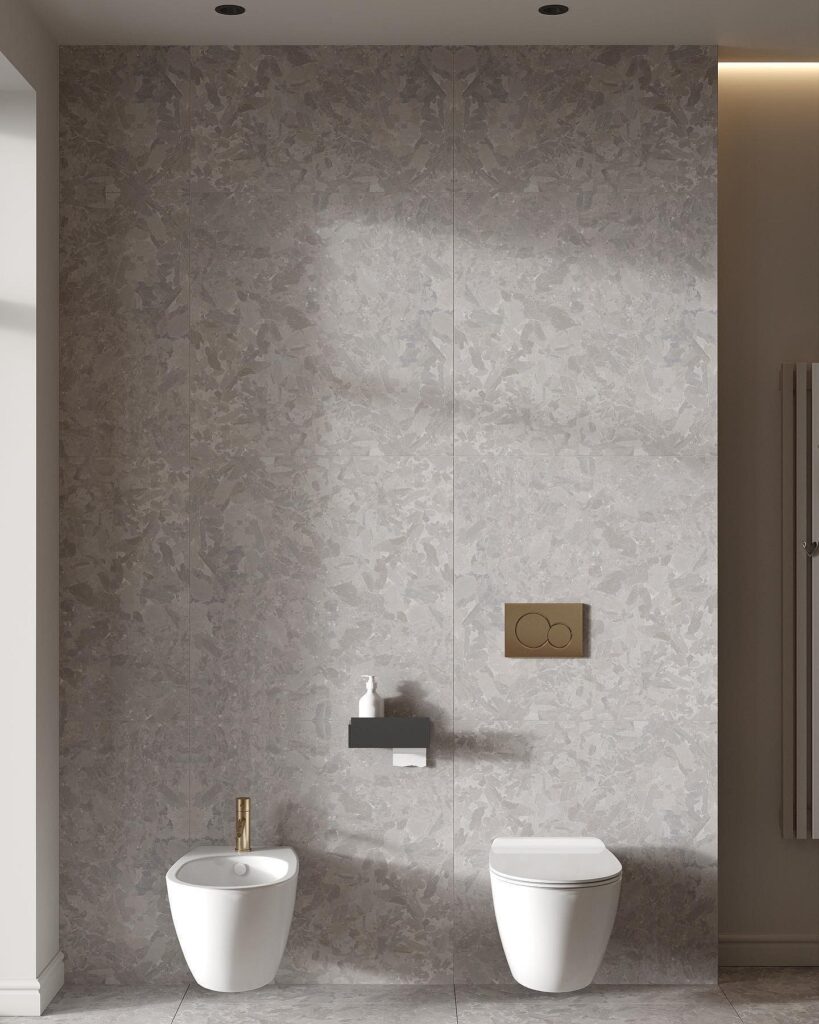
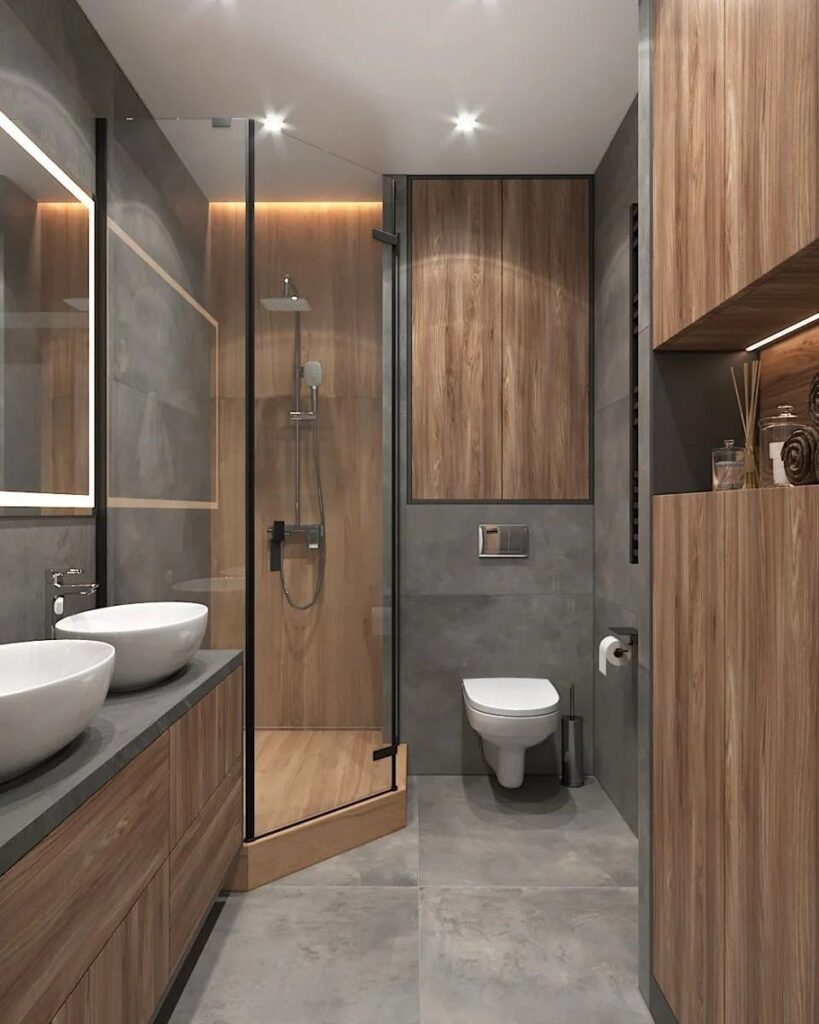
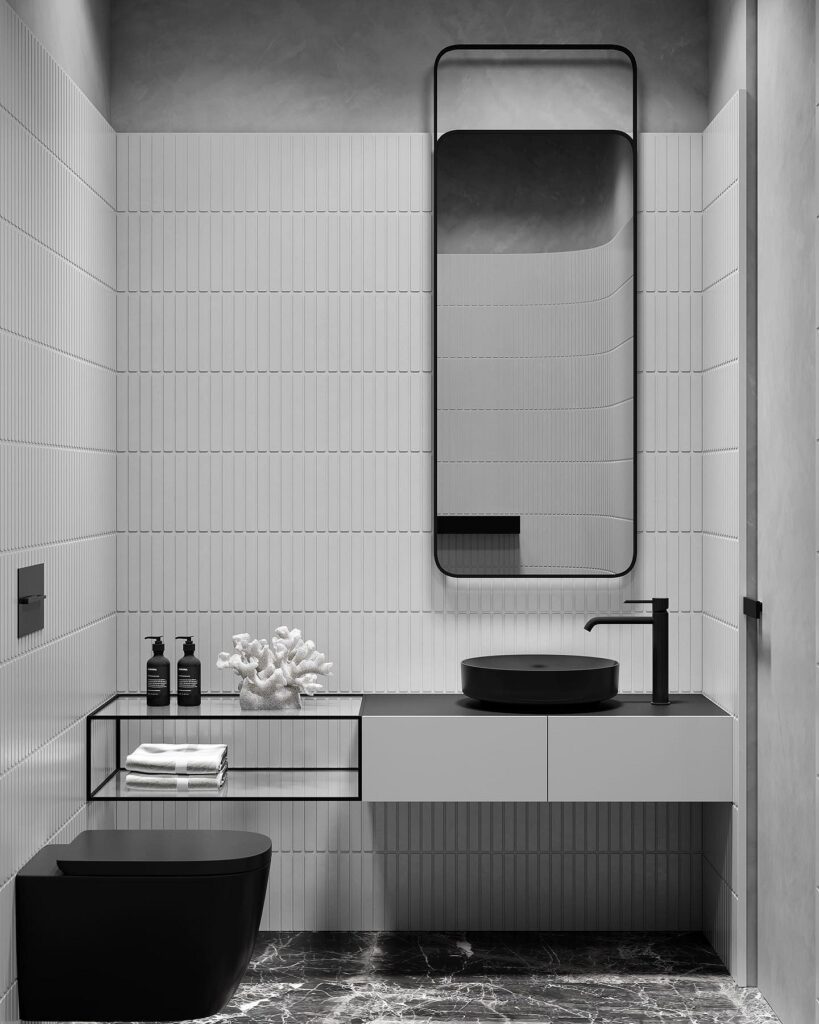
Furniture and Plumbing in a Gray Bathroom
The furniture set in an average-sized bathroom is small. Usually, it consists of a vanity unit and optionally other storage systems.

Most often, neutral furniture supports a corresponding palette. It can be the same monochrome range in grayish tones or a combination with black, white, or beige. The versatility of the achromatic color is revealed here as well: it can emphasize the nobility of wooden facades, the solidity of stone (for example, on the countertop), or the laconicism of modern design. It looks good on both simple smooth surfaces and textured ones.
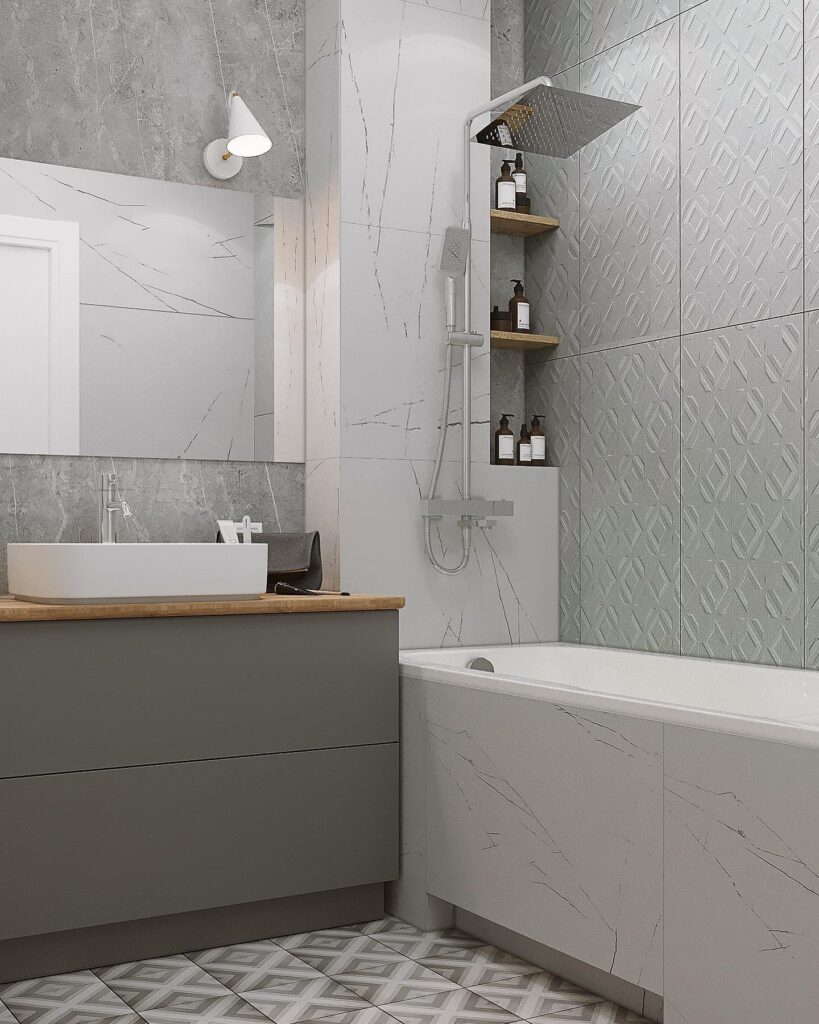
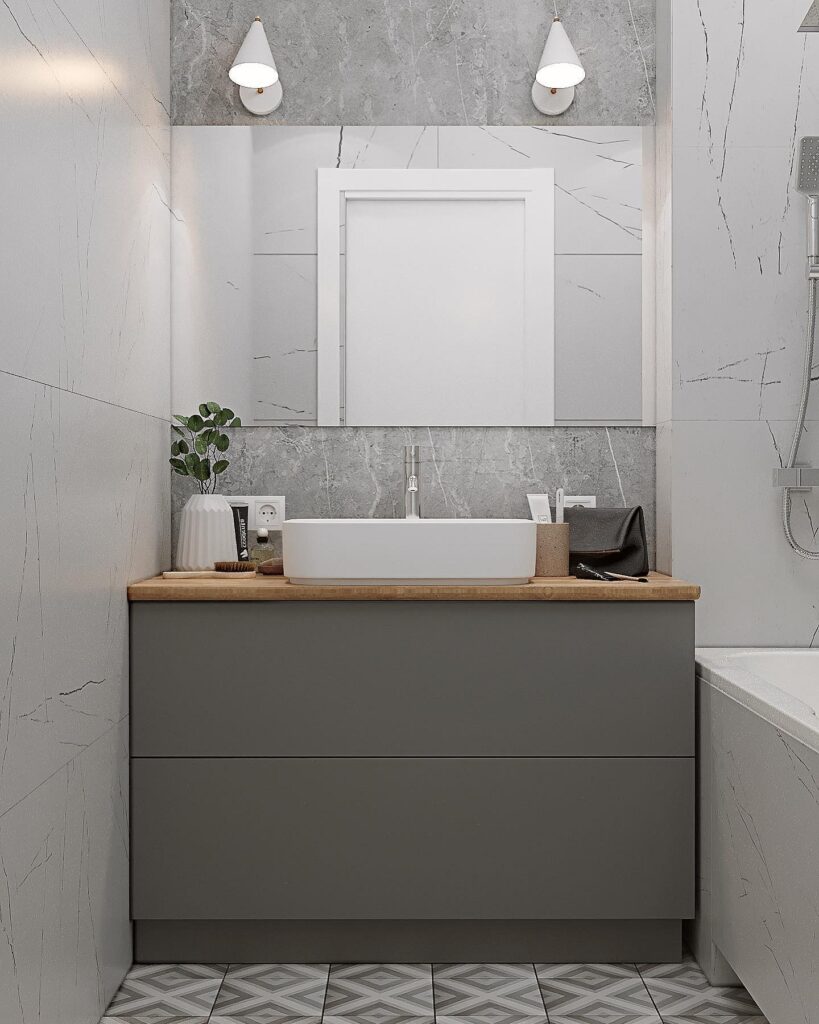



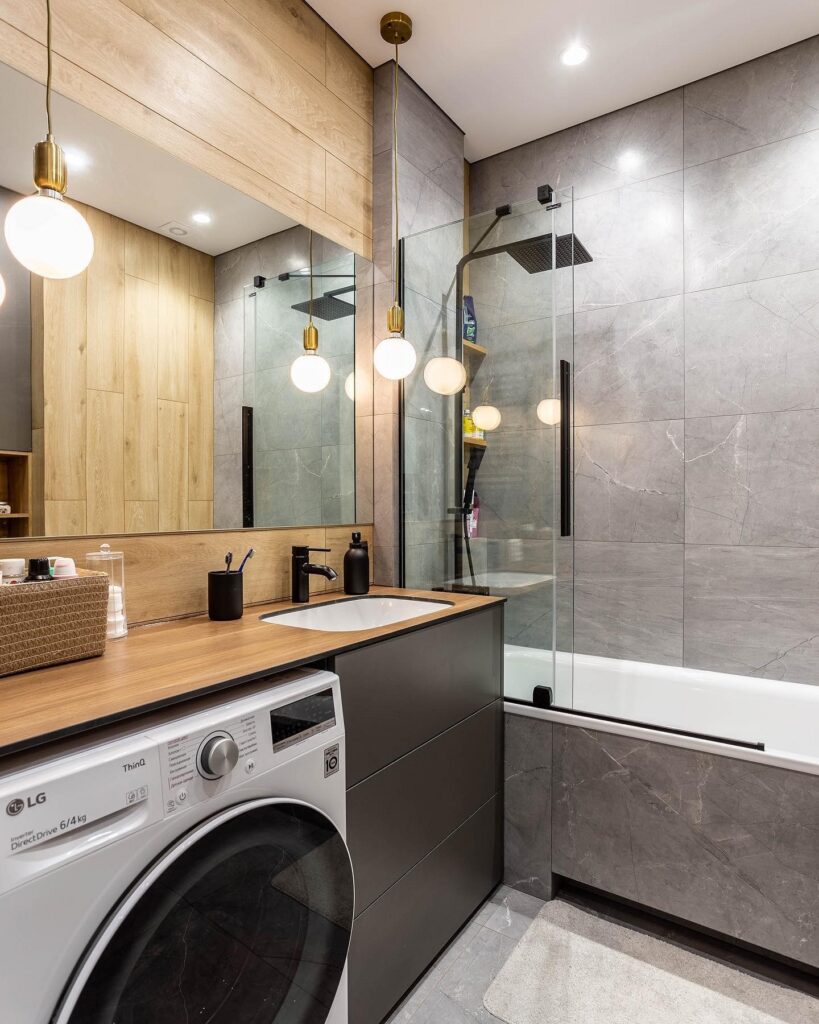


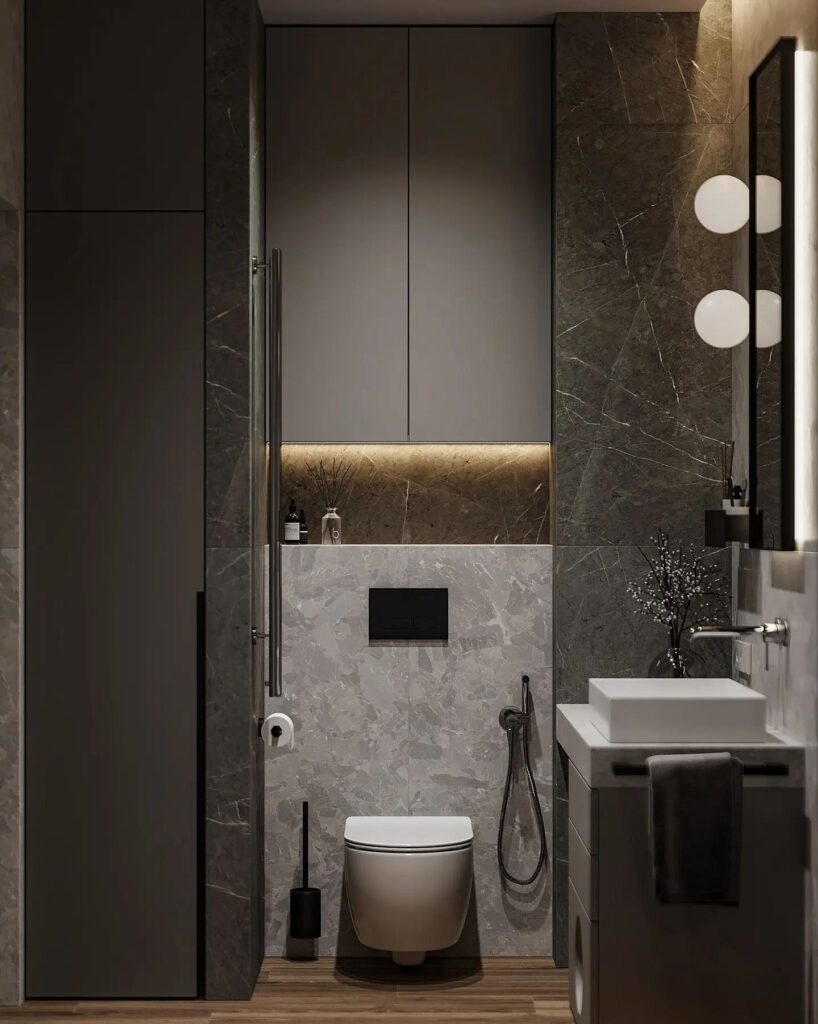
Plumbing is a bit more complicated. Standard colors are white or black. Other shades are also available, but the choice is significantly smaller. On the other hand, an unusual design looks very impressive and attracts attention. Moreover, it’s an excellent addition to a monochrome palette if you want to stay within the gray spectrum. Faucets in the sink and bathtub can match exactly or be contrasting (for example, golden).
An important point: on dark and colored matte surfaces, dried drops, lime scale, and minor dirt are more noticeable than on light gloss. When choosing such plumbing, be prepared to regularly
clean it or look for models made of dirt-repellent enamel.
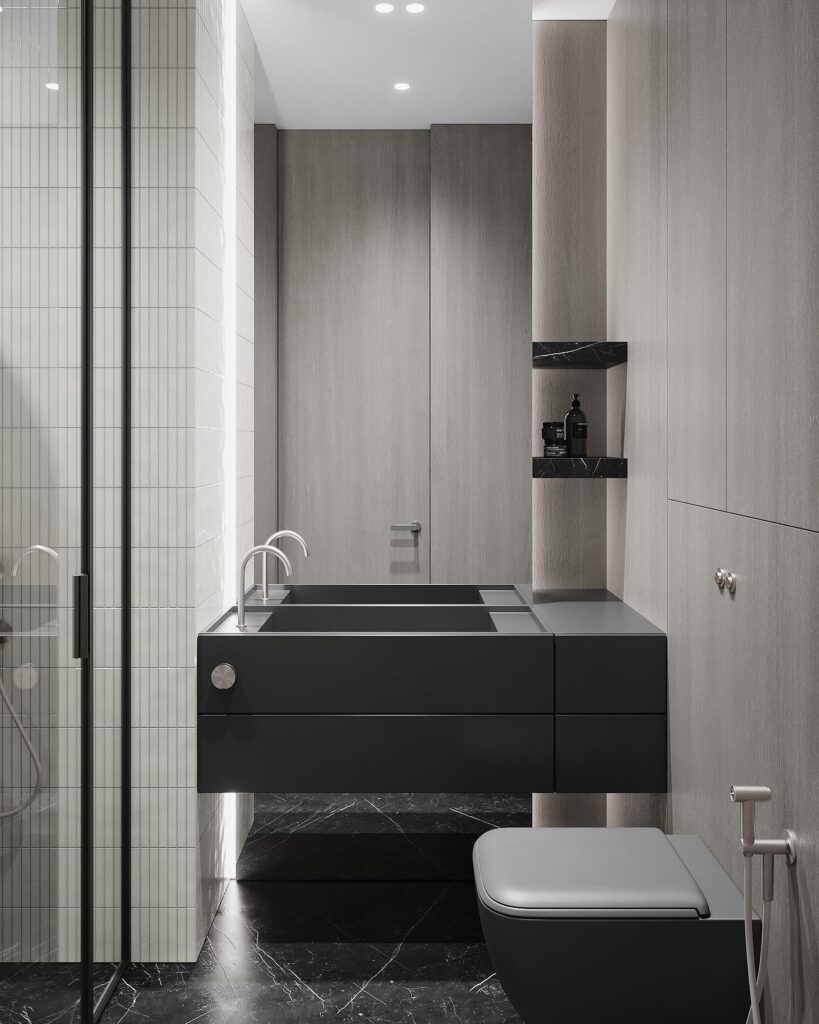

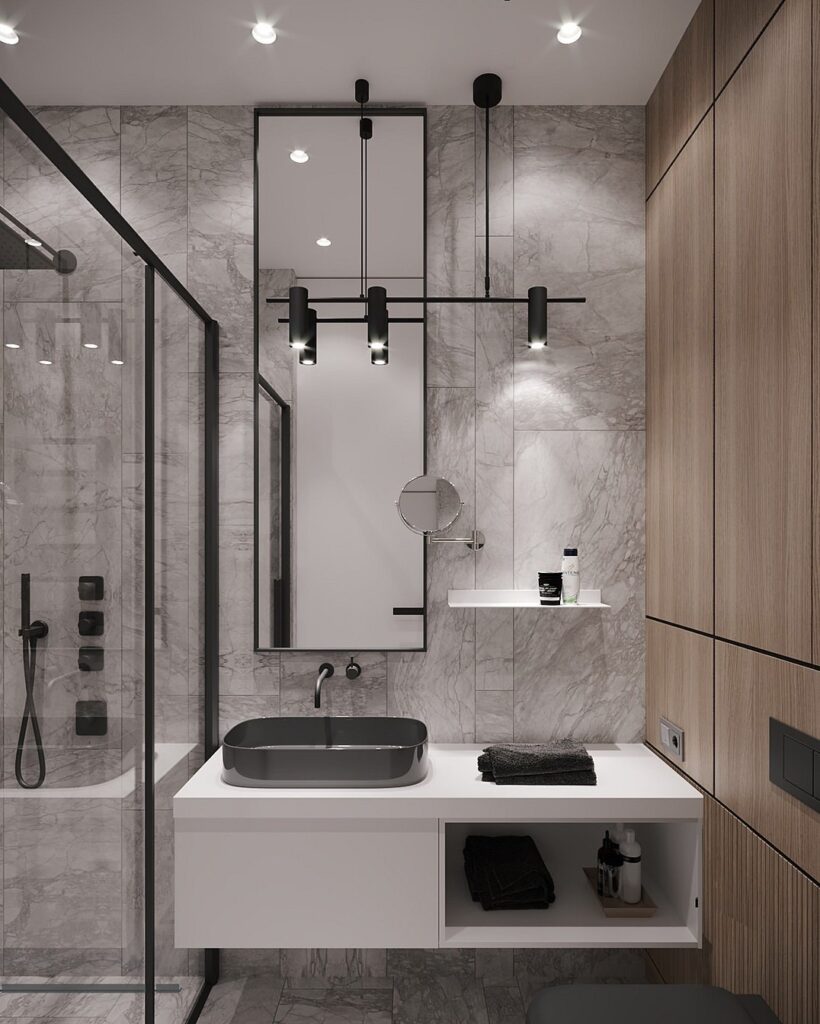

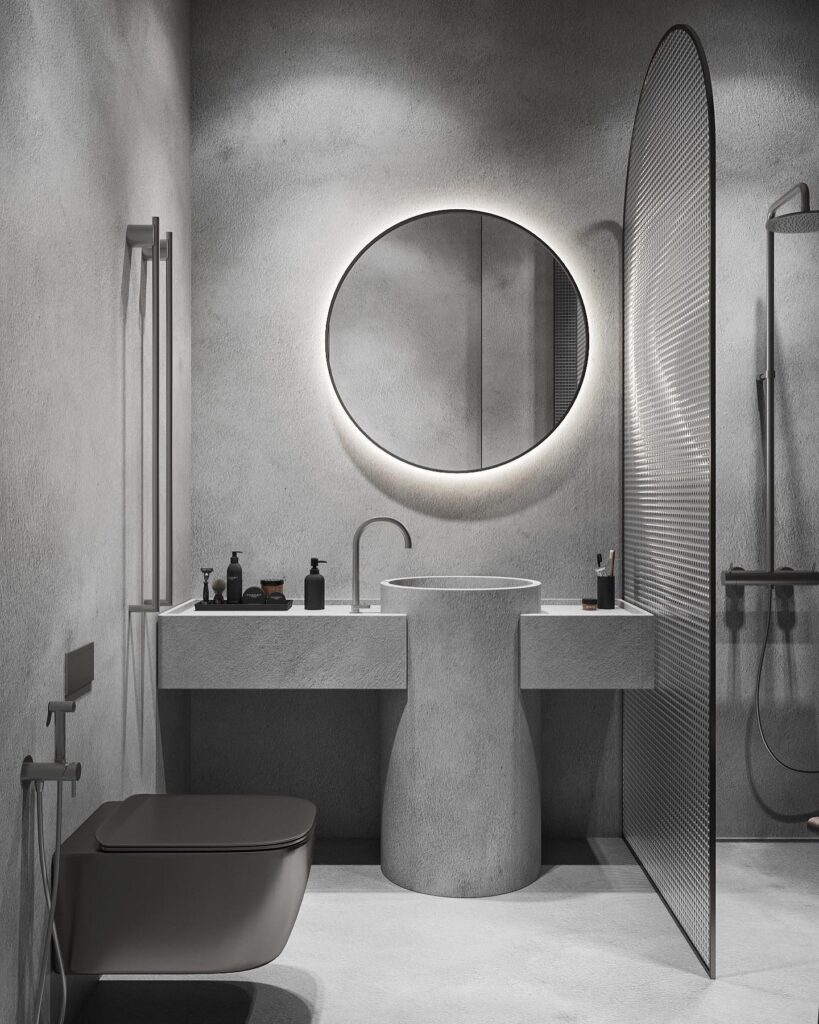

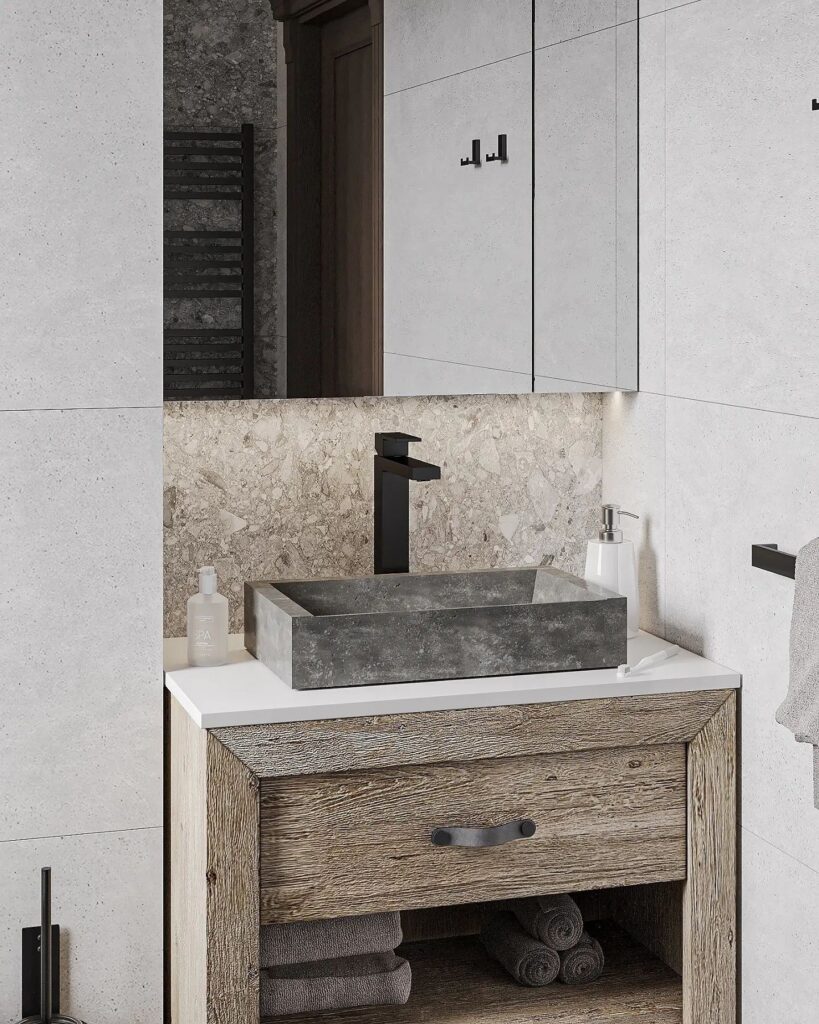



Decor and Textiles
It is believed that in the interior, decor and textiles should be richer than the rest of the decor.

But this is not a dogma, and you can choose details in the same color scheme as the entire palette. And the classic style, for example, does not involve bright colors at all—accents in such a bathroom are placed differently, through textures and a certain set of materials.
Moreover, towels and a rug in the same style, identical containers for cosmetics and hygiene products, ensure visual cleanliness in the interior. After all, a bathroom in gray tones, where colorful wrappers and various ornaments are visible here and there, will be perceived as cheap and untidy. Neutral textiles and decor are a popular technique in expensive hotels, and noble gray tones will only enhance this effect.


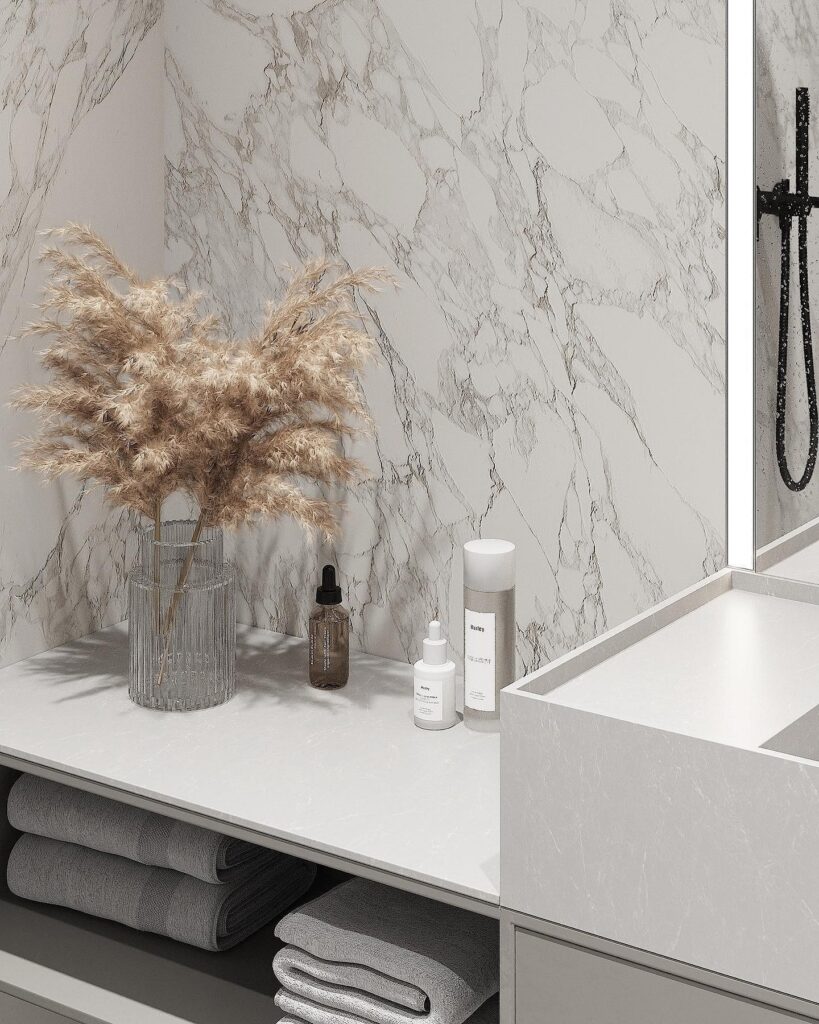
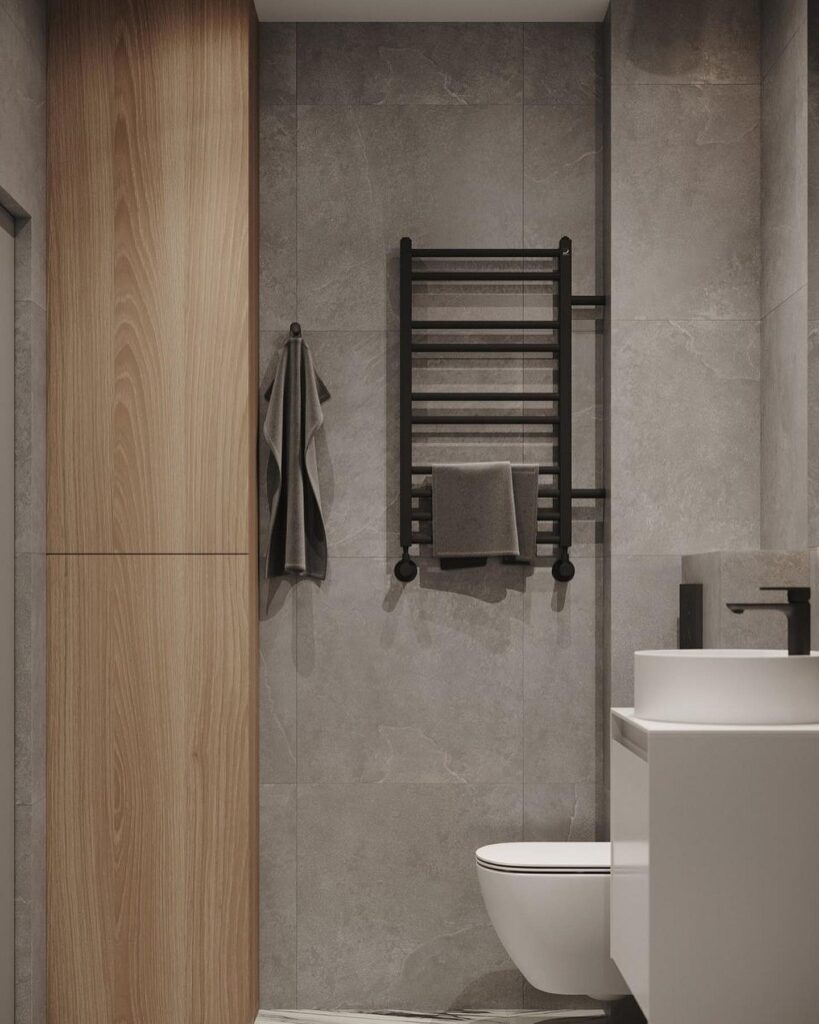





Color Schemes
And now let’s consider what other colors are suitable for a gray bathroom, with interior photos.
Achromatic

White and black are the best companions for achromatism, as they belong to the same spectrum. They are the same “universal soldiers,” which can be used in different proportions and thereby create the desired effect. Traditionally, it is considered that there should be more light in the palette, so white can confidently be used for walls and ceilings, as well as large plumbing fixtures. Black, on the other hand, is most often chosen as a contrast, although it is in the bathroom where you can experiment and give it a leading role along with anthracite, asphalt, and other dark tones.
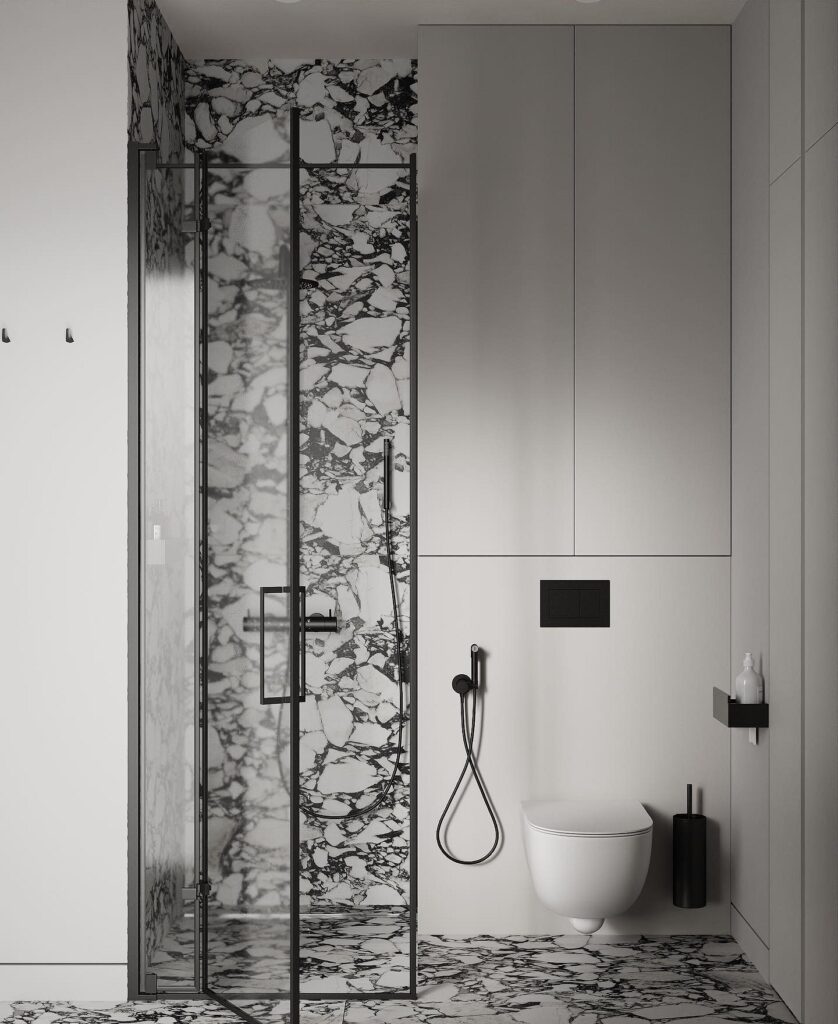
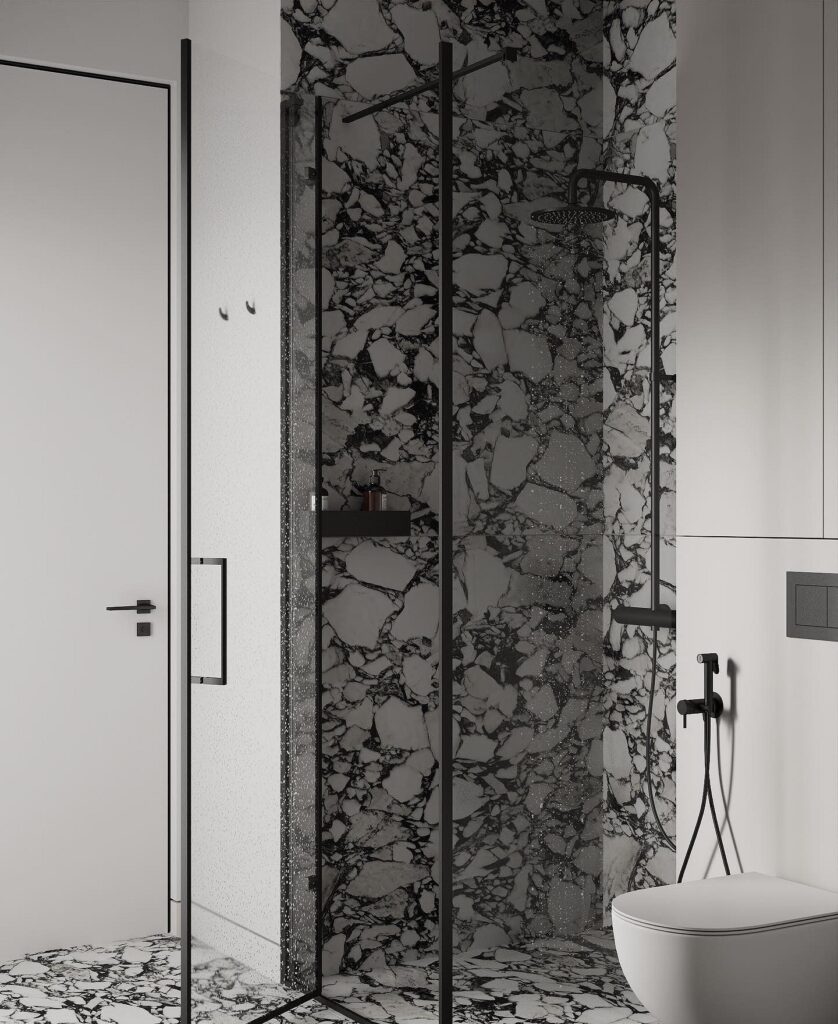
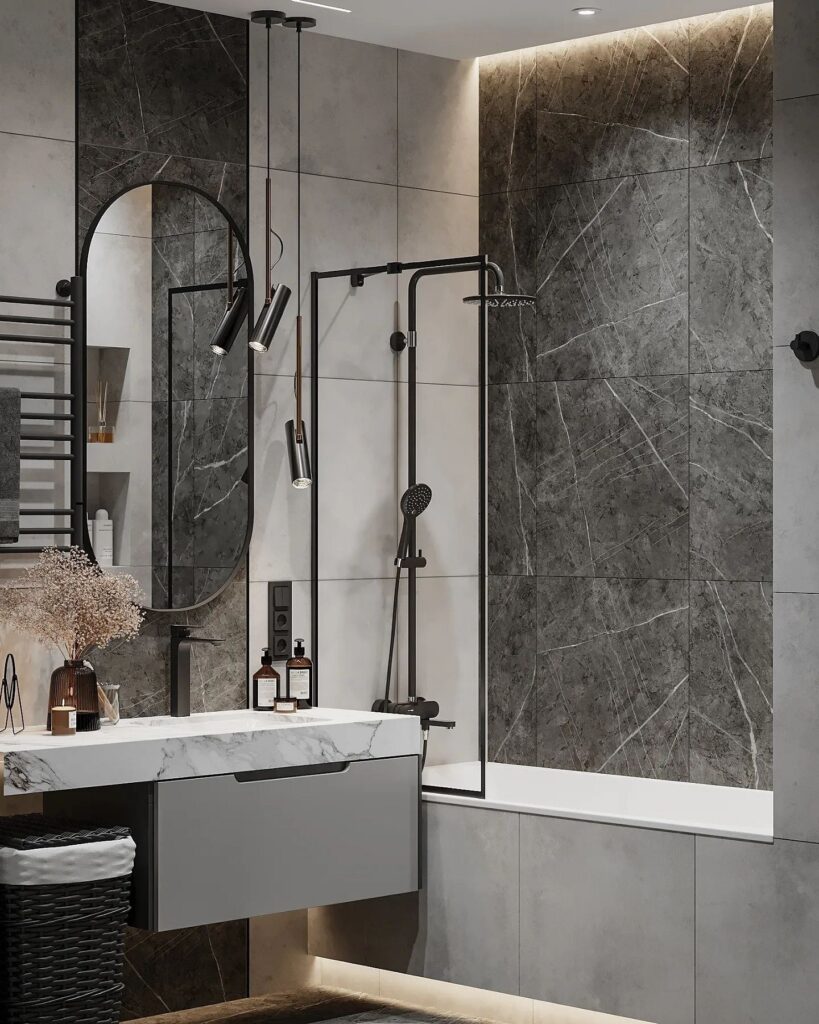





Neutral
Another foolproof combination, relevant for both classic and minimalist or eco-style, is grayish shades together with beige and/or brown.

In nature, these colors often coexist, so they look natural and do not evoke negative associations. However, such a combination itself is quite simple and even boring, so it needs to be “brought to perfection.” To do this, you can:
- Dilute the basic palette with a couple of bright color spots.
- Supplement it with active textures or ornaments.
- Use more complex shades that look expensive and interesting on their own.
- Add contrast, incorporate black and white to set accents.
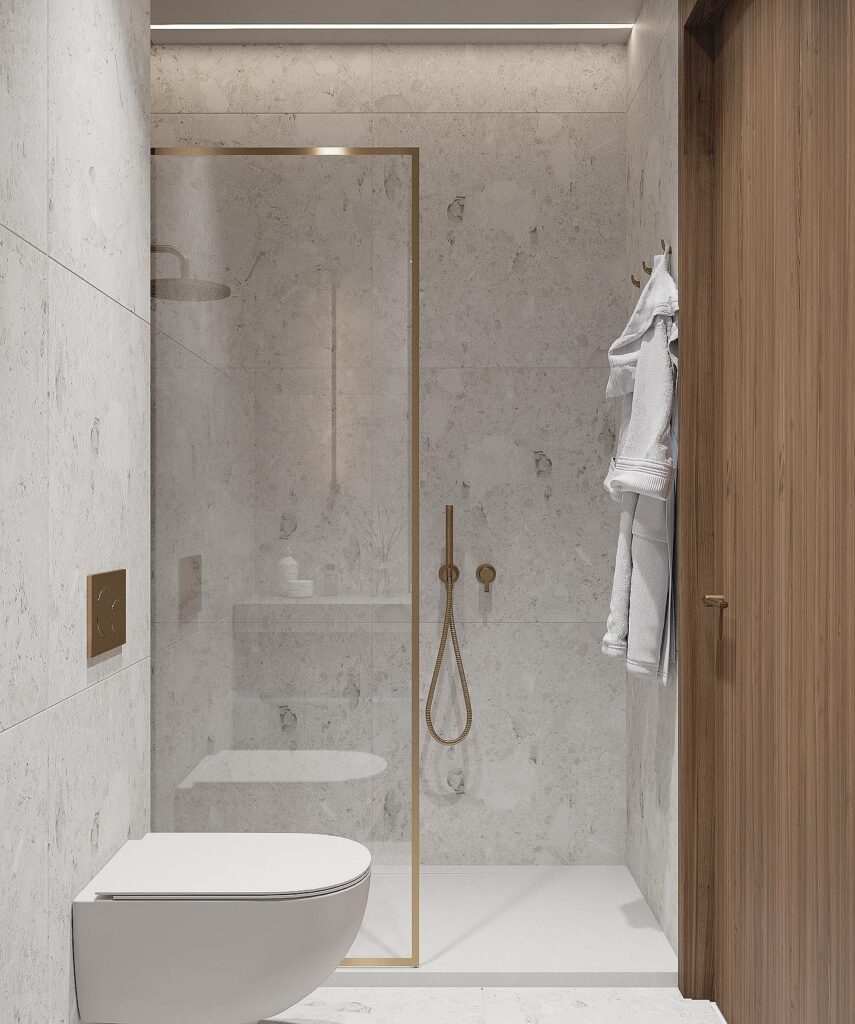





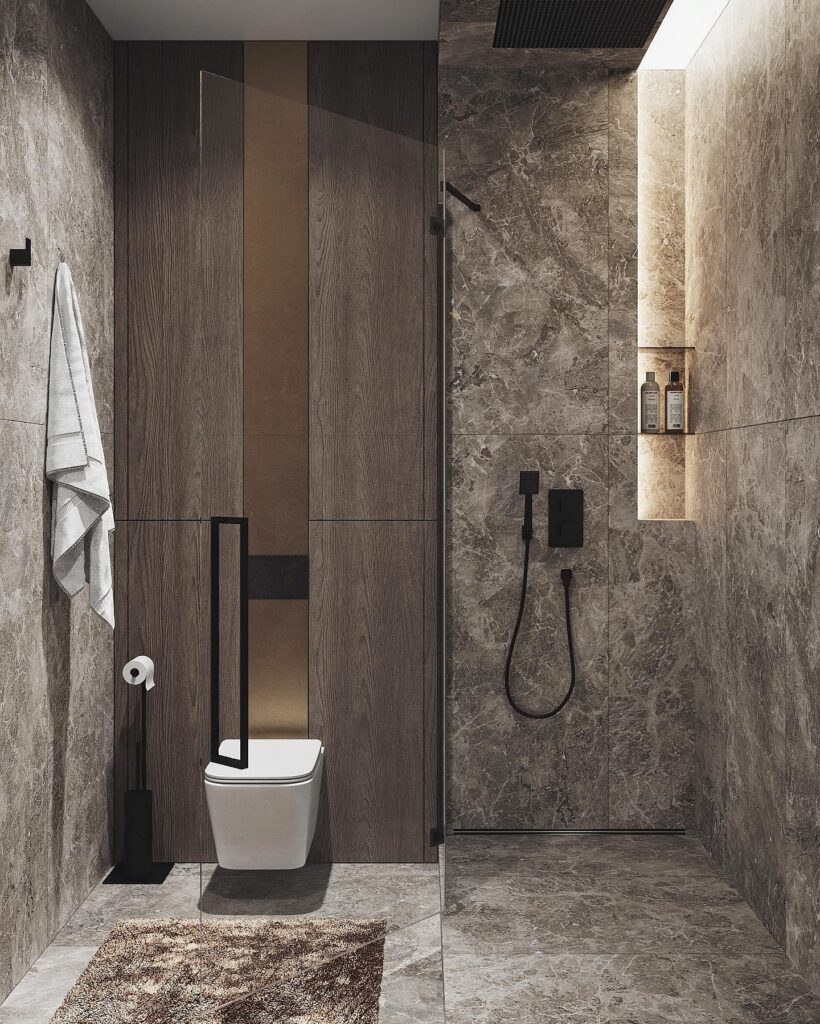
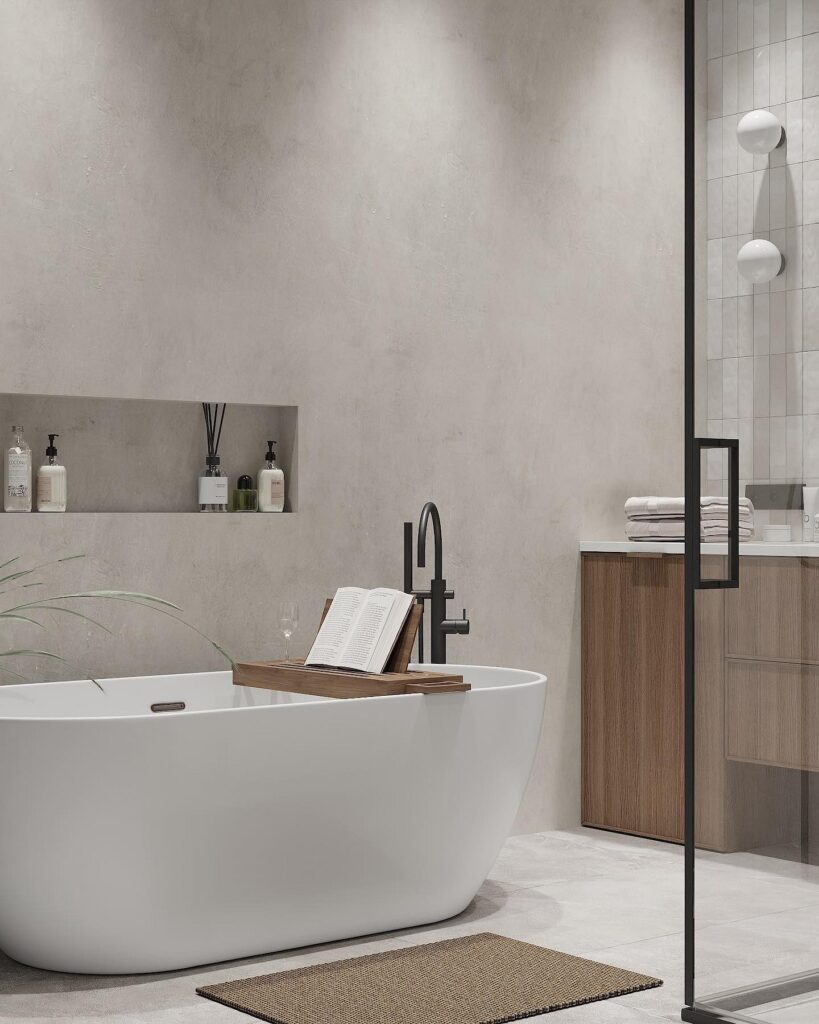

Dark
The bathroom is the place where you can afford bold experiments.

This includes making a small space dark. In this case, the gray tiles in the bathroom can be not light-pearl, but more saturated, closer to black. Use shades like marrone, asphalt, chalk, wet stone.
And remember the main rules of a dark interior:
- There should be a lot of light in it (in the case of a bathroom—most likely artificial). And to make the lighting work even more effectively, hang a larger mirror and use glossy surfaces that will reflect light.
- Add a few light accents for the eyes to rest on. This can be contrasting furniture and plumbing, part of the tiles or paint, bathroom textiles.
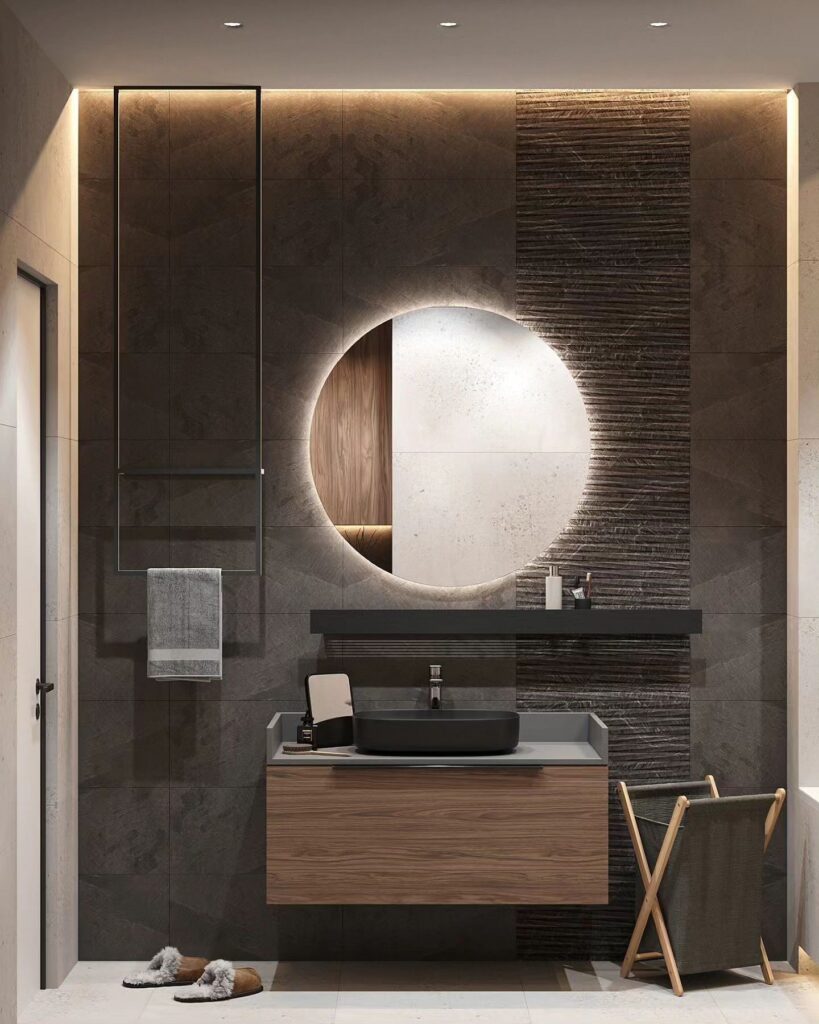
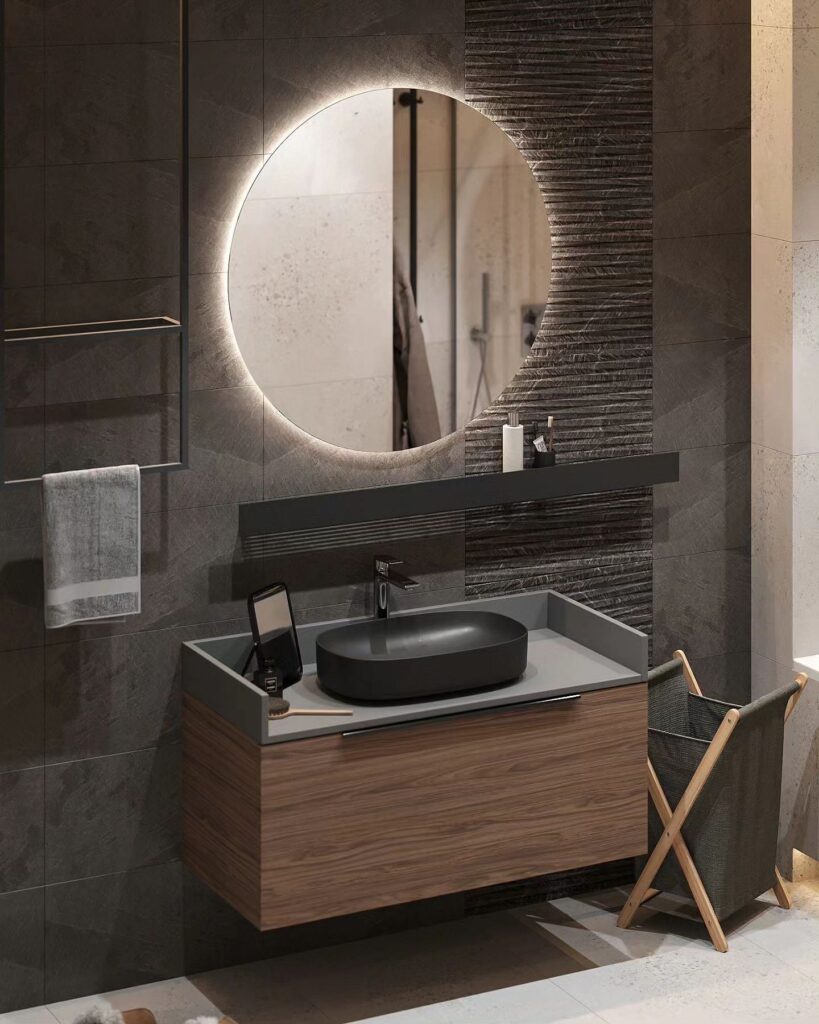

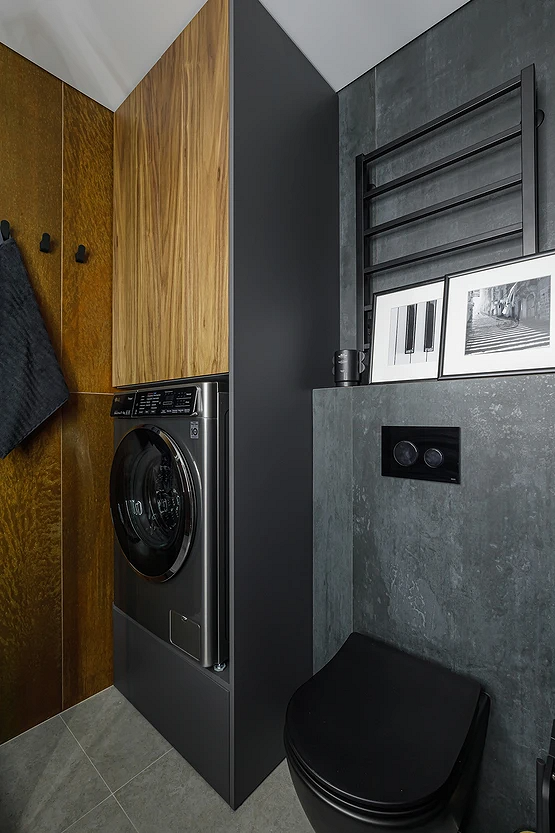
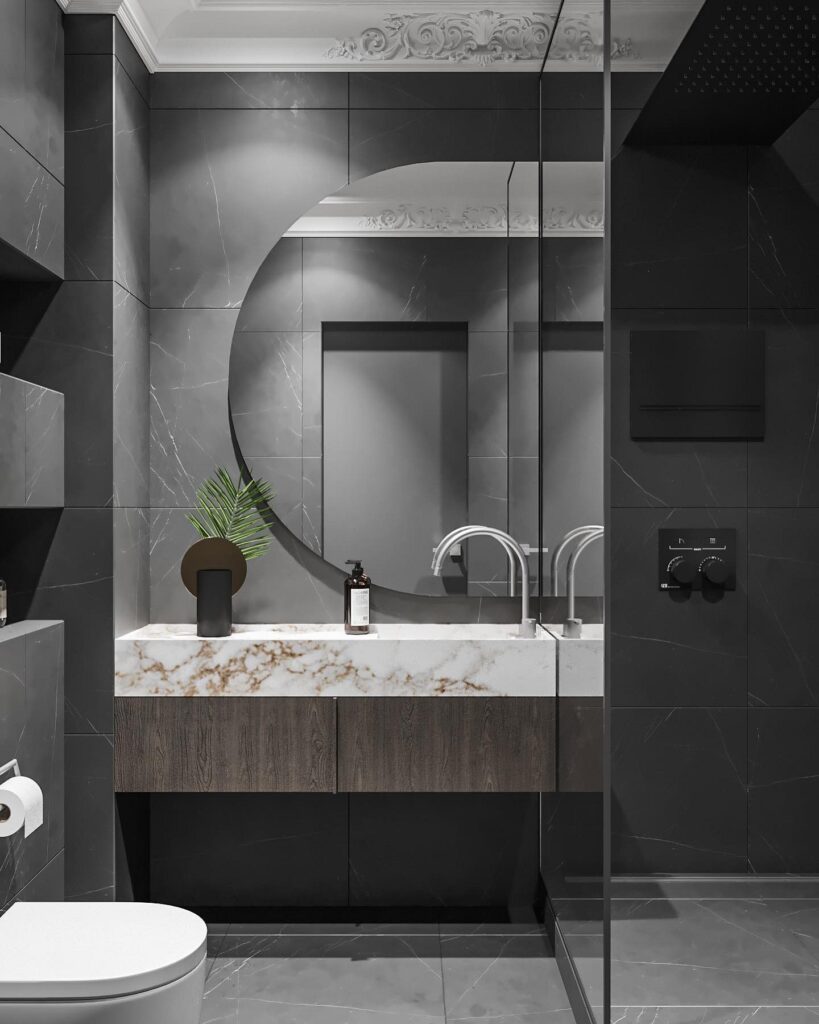


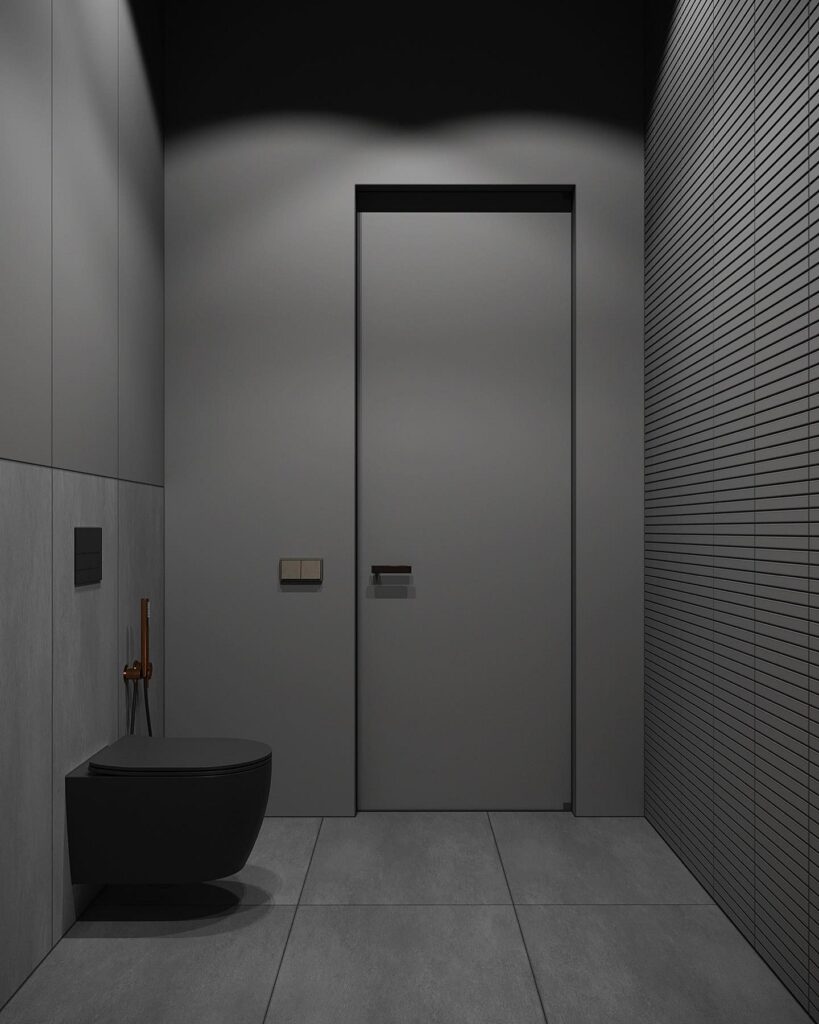
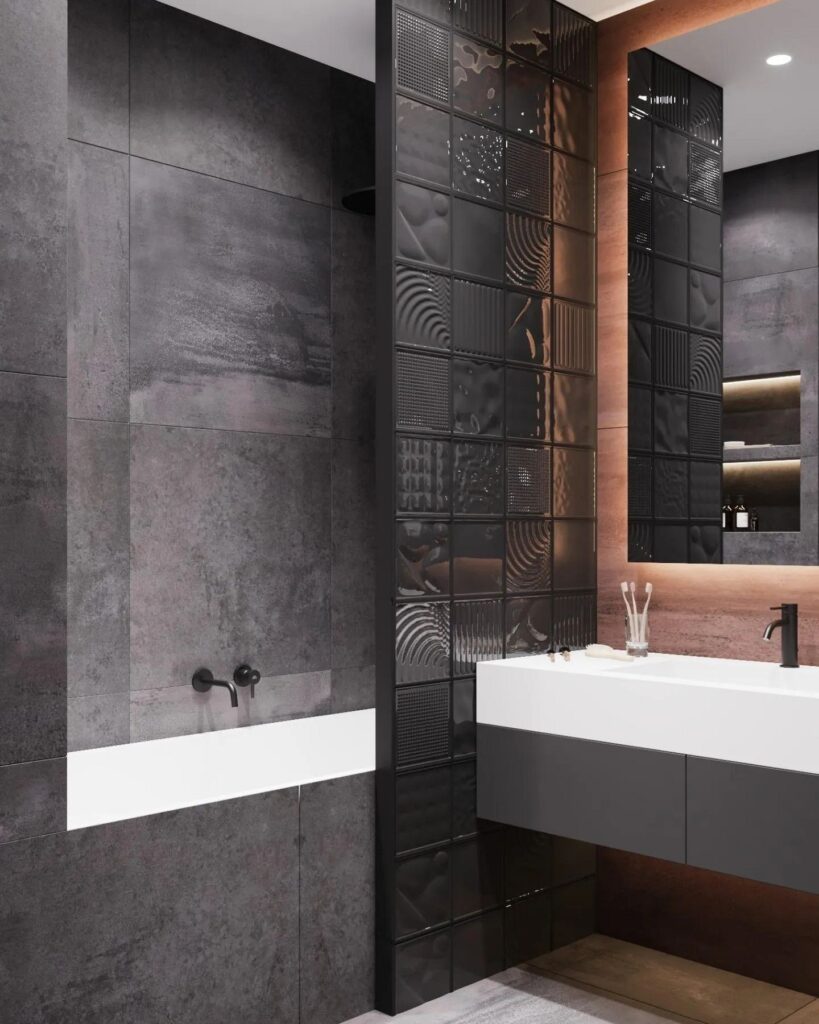

With Bright Accents
Even a couple of color splashes will be enough to liven up and diversify the neutral palette.

Saturated shades can be any:
- Cool (blue, light blue, purple, emerald).
- Warm (orange, yellow, olive or herbaceous green, terracotta).
- Pastel (pink, peach, cornflower, lilac).
The main thing is to choose them so that they match the gray in terms of color temperature and thereby look harmonious. Bright accents can be anything: a vanity unit, a poster on the wall, textiles, a decorative partition, indoor plants (some varieties feel great in a humid room without natural light).
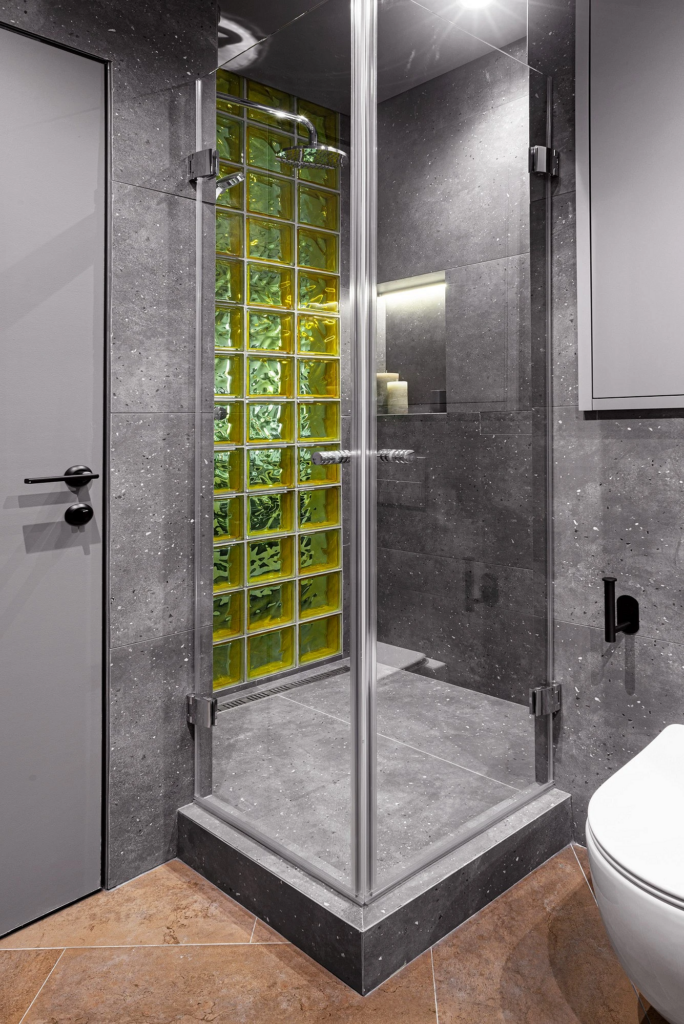


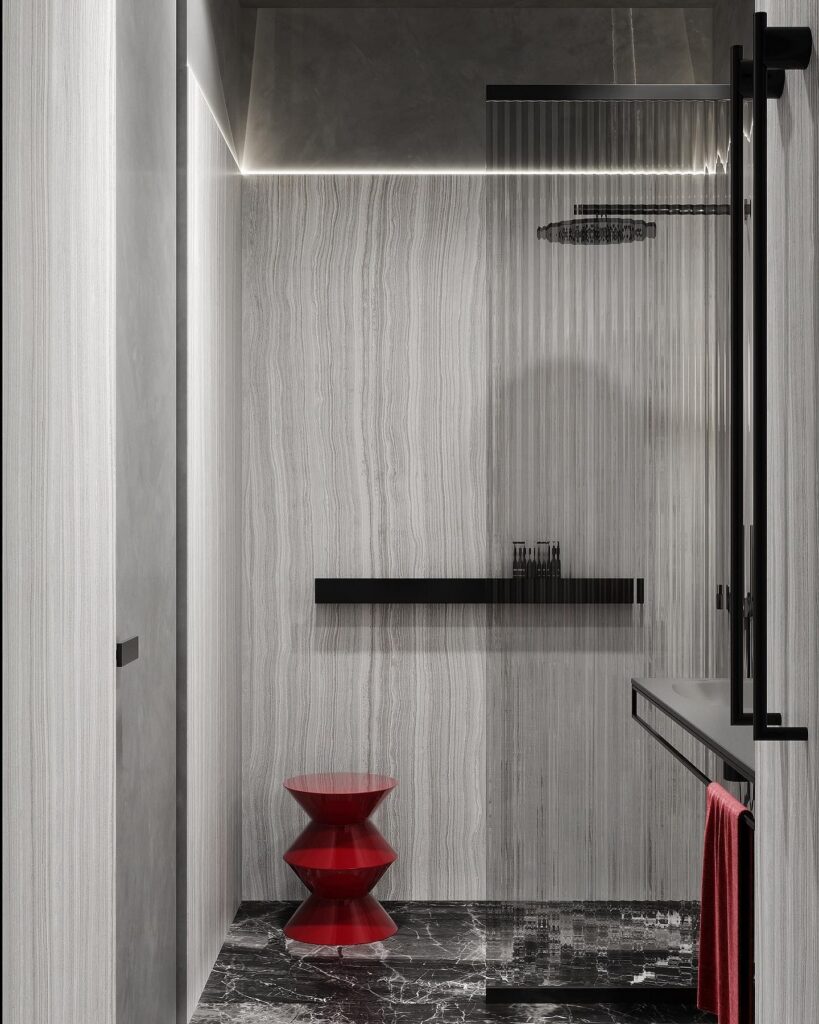


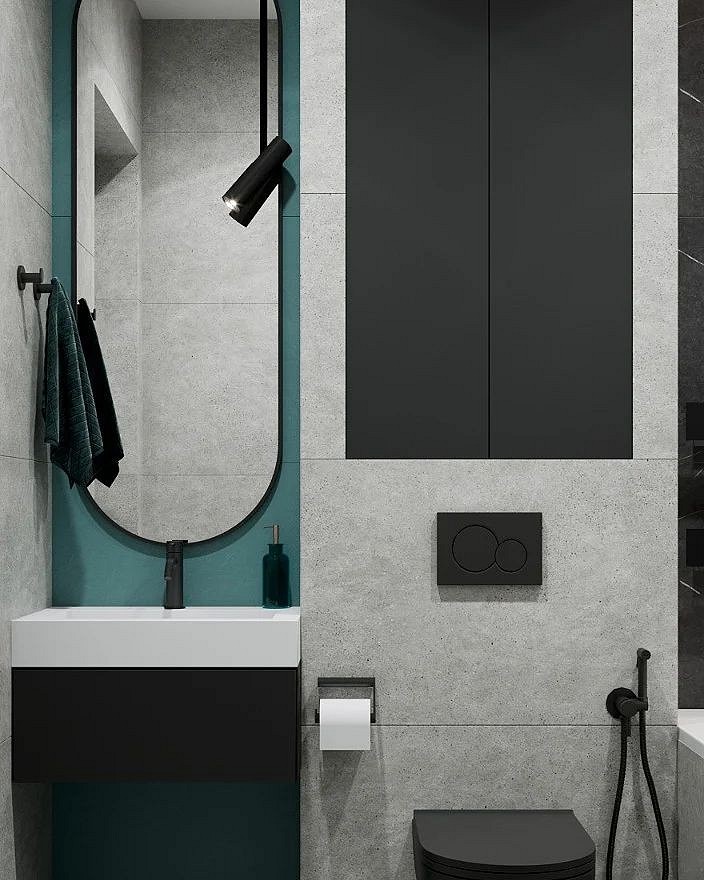


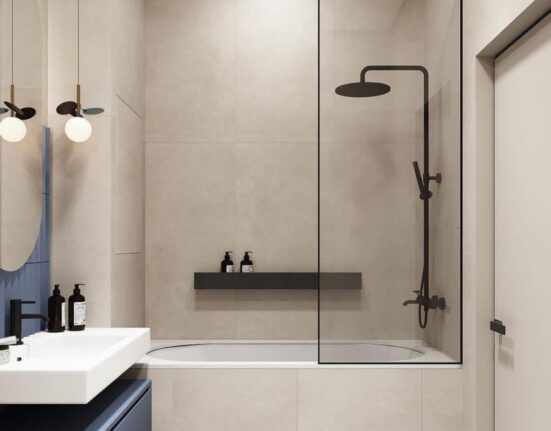
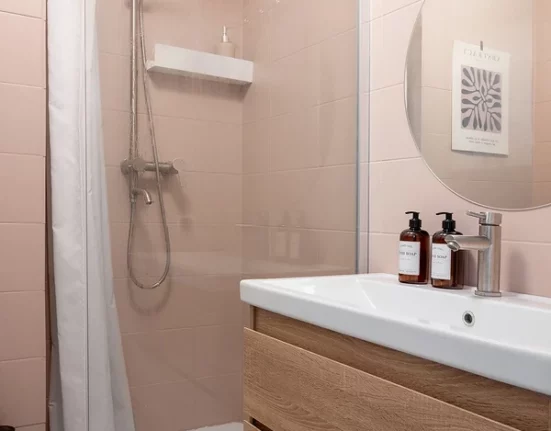


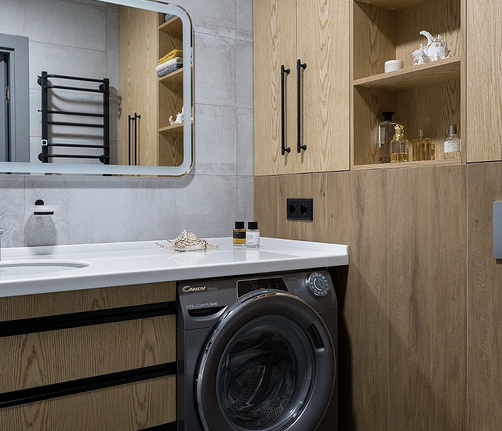

Leave feedback about this